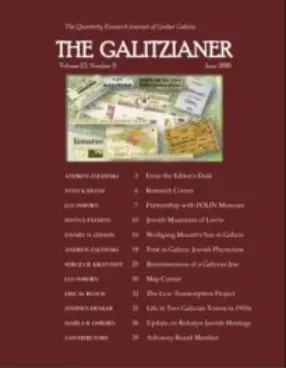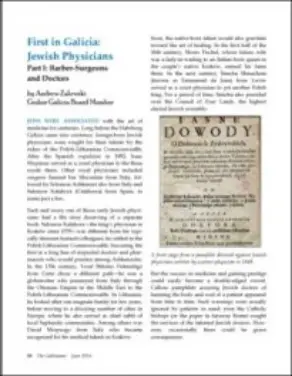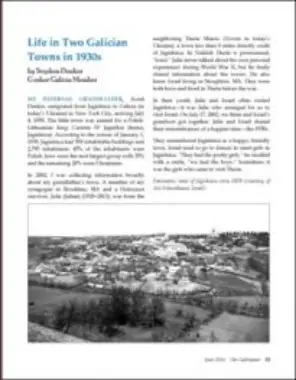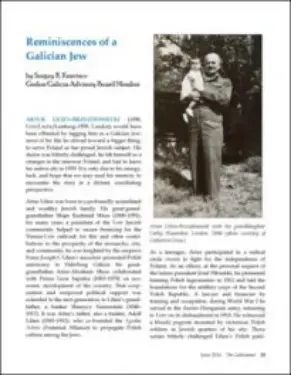The Galitzianer
The Quarterly Research Journal of Gesher Galicia
Past issues of the journal are also searchable and available for download in the Gesher Galicia Members Portal.
The Galitzianer encourages submissions by the members of Gesher Galicia. The journal also accepts articles from nonmembers, including family researchers, academics, members of other genealogical organizations, and people involved in Jewish heritage work in the former Galicia. Please consult our submissions policy and instructions for authors for details.
Regular Columns
- From the Editor’s Desk by Jodi G. Benjamin, Editor
- President’s Page by Steven S. Turner, Gesher Galicia Board President
- Research Corner by Mark Jacobson, Gesher Galicia Research Coordinator, or other contributing researchers
- Map Corner by Jay Osborn, Gesher Galicia Digital Maps Manager
Another regular section is “Faces of Galicia,” which includes photographs and/or drawings submitted by members and nonmembers and linked to the past Jewish presence in Galicia.
Submissions Policy
Prospective authors are encouraged to contact the editor to consult about interest in a potential topic for a future article. Please direct your queries or suggestions to submissions@geshergalicia.org.




